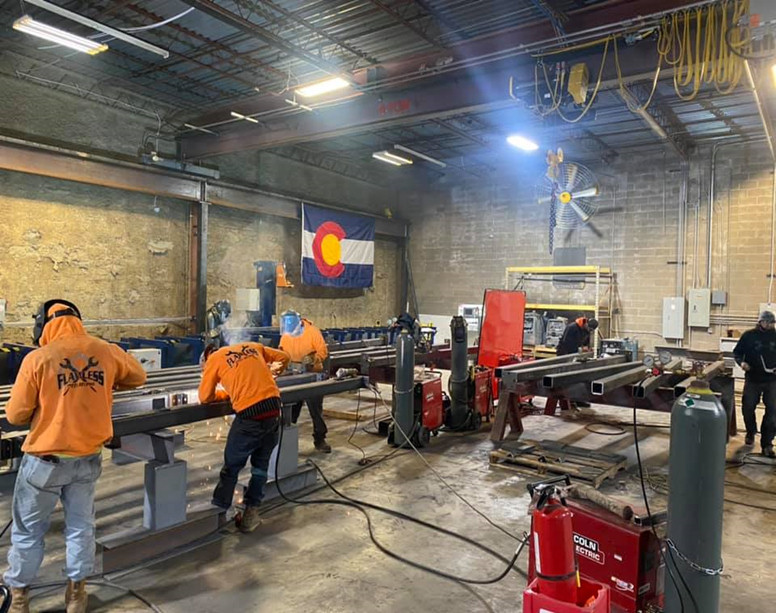Reputable Steel Fixing Services: Making Certain Structural Stability
Reputable Steel Fixing Services: Making Certain Structural Stability
Blog Article
The Ultimate Manual on Personalized Steel Fabrication Solutions for Structural Projects
In the world of structural tasks, the significance of custom-made steel fabrication options can not be overemphasized. From the fundamental understanding of steel fabrication fundamentals to the detailed process of picking the most suitable products, every action in this journey plays an essential duty in the best success of a project. As we browse via the complexities of design factors to consider, manufacture processes, and high quality control actions, a comprehensive handbook acts as an assisting light for specialists looking for quality in steel fabrication remedies. Stay tuned to reveal the understandings that can change the way structural projects are approached and implemented.
Understanding Customized Steel Fabrication Essentials
Delving into the basics of personalized steel fabrication provides understanding into the elaborate procedure of changing raw steel right into customized structural components. Personalized steel manufacture is a specific manufacturing technique that includes cutting, shaping, and assembling steel materials to create special structures according to specific job demands. Understanding the basics of personalized steel manufacture is vital for making certain the effective execution of architectural tasks.
The process generally begins with the assessment of job requirements and layout needs. This first stage includes in-depth preparation and partnership in between designers, designers, and producers to identify one of the most appropriate strategy for producing the steel elements. Precision is essential during the construction procedure, as even minor discrepancies can influence the structural integrity of the final product.
Different techniques, such as cutting, welding, and shaping, are utilized to change raw steel right into the preferred architectural aspects. Proficient makers utilize innovative equipment and tools to make sure precision and uniformity throughout the construction process. Quality assurance procedures are applied to confirm the honesty of the produced parts prior to they are set up on-site, ensuring compliance with market criteria and job specs.
Picking the Right Steel Materials

Primarily, the sort of structural job and its specific needs play a critical duty in identifying one of the most appropriate steel products. Variables such as the load-bearing capability, ecological conditions, and desired lifespan of the structure will certainly determine the quality and type of steel that need to be used.
In addition, the physical properties of the steel, including weldability, ductility, and strength, our website have to straighten with the project's needs to assure optimal performance and toughness (Alpha reo). In addition, factors to consider such as deterioration resistance, cost-effectiveness, and accessibility of the steel materials must also be thought about during the choice procedure
Design Considerations for Structural Projects
Architectural tasks demand careful interest to develop factors to consider to make sure both functionality and security are prioritized throughout the building and construction procedure. When it comes to creating structural tasks, a number of crucial factors have to be taken right into account to assure the success of the endeavor. By meticulously considering these aspects during the design phase, engineers and engineers can make sure the structural project's success from perception to conclusion.
Simplifying Fabrication Procedures for Efficiency

Additionally, implementing lean production principles can considerably improve performance in steel fabrication. By reducing waste, visit our website maximizing workflow, and boosting communication between different teams included in the manufacture procedure, projects can be finished extra quickly and with better standards.
Additionally, establishing an efficient production schedule and workflow can aid in prioritizing tasks, designating sources efficiently, and conference job due dates promptly. By having a clear plan in location and consistently checking progression, any type of potential bottlenecks or hold-ups can be identified and resolved without delay, making certain efficient and smooth construction procedures for architectural projects.
Quality Assurance and Project Management in Steel Fabrication
To guarantee the effective implementation of steel fabrication tasks, thorough quality control measures and reliable project management practices are important components in preserving accuracy and conference client assumptions. Quality control in steel construction includes extensive assessments at different stages of the fabrication procedure to verify compliance with project specs and industry standards. This consists of product screening, dimensional checks, and weld evaluations to make sure architectural integrity and security.
Task administration plays a critical role in collaborating the different facets of steel fabrication jobs, such as scheduling, source allotment, and communication among employee. A well-defined task strategy with clear purposes, landmarks, and timelines helps to check progress and deal with any type of possible problems proactively. Reliable interaction between all stakeholders, including clients, contractors, fabricators, and designers, is vital for guaranteeing that find out here the job advances efficiently and fulfills the wanted high quality standards.
Final Thought
In conclusion, custom-made steel construction plays an important function in architectural jobs by giving tailored options using the appropriate materials and layout considerations. Performance in fabrication procedures, quality assurance, and efficient task monitoring are vital for successful results. By recognizing the essentials of personalized steel fabrication and implementing streamlined processes, task groups can supply resilient and high-grade frameworks that fulfill the specific requirements of their customers.
Custom steel construction is a specific production technique that involves cutting, shaping, and assembling steel products to create distinct frameworks according to specific task demands.To ensure the effective execution of steel construction jobs, meticulous high quality control procedures and effective task management methods are essential elements in maintaining precision and meeting customer expectations. Quality control in steel manufacture involves strenuous assessments at numerous phases of the construction process to verify conformity with job specs and sector standards (metal fabrication melbourne).Job management plays an essential duty in collaborating the different facets of steel construction jobs, such as scheduling, resource allotment, and communication among group participants.In verdict, custom steel fabrication plays an essential duty in architectural jobs by providing tailored remedies making use of the right materials and style considerations
Report this page